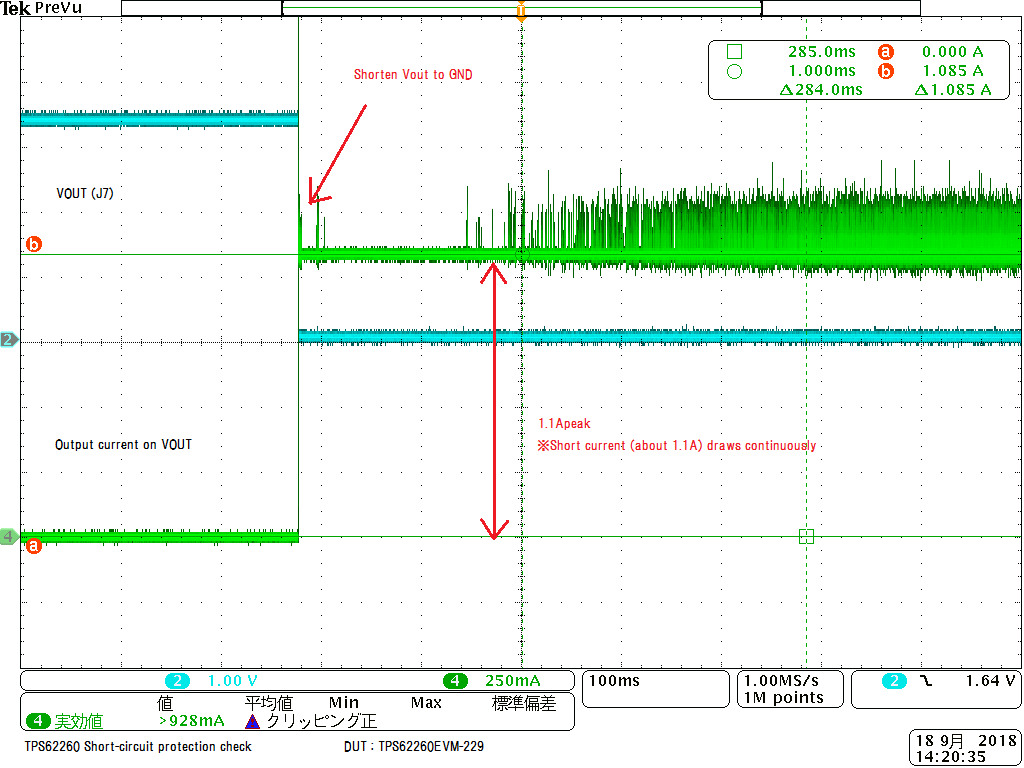Other Parts Discussed in Thread: , TPS62170, TPS62175, TPS62821, TPS62147
Hi Sir,
I verified TPS62260 short circuit protection behaviour under the following condition.
DUT : TPS62260EVM-229 Rev.A
VIN : 6V, VOUT : 3.3V
Once I shorten this output (Vout to GND) while running, the short current (about 1.1A) draws continuously as below and it looks like the short protection circuit does not work at all.
Is this behaviour normal to tps62260?
I would like to turn the output off or hi-cup the output in this case, are there any way to solve this behaviour?
Moreover in terms of short circuit protection, tps62170/tps62175 are same behaviour?
Regards,


